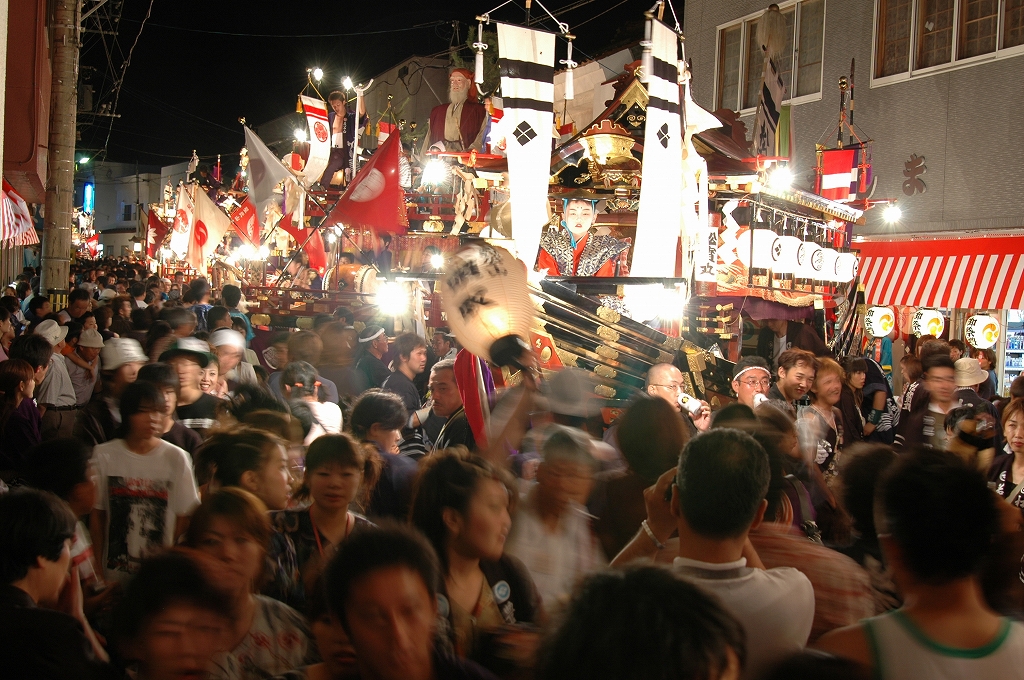
(Photo courtesy of Esashi Sightseeing & Convention Association)

(Photo courtesy of Esashi Sightseeing & Convention Association)
Since the Edo Period, Esashi prospered as a herring fishing community, and was greatly influenced by the culture and festivals of the Kansai and Hokuriku regions due to the Kitamae-bune ships that arrived via the Sea of Japan shipping route. The origins of the Ubagami Daijingu Togyo Festival date back 375 years, when it began with the people of Esashi thanking the gods for the plentiful herring catches.
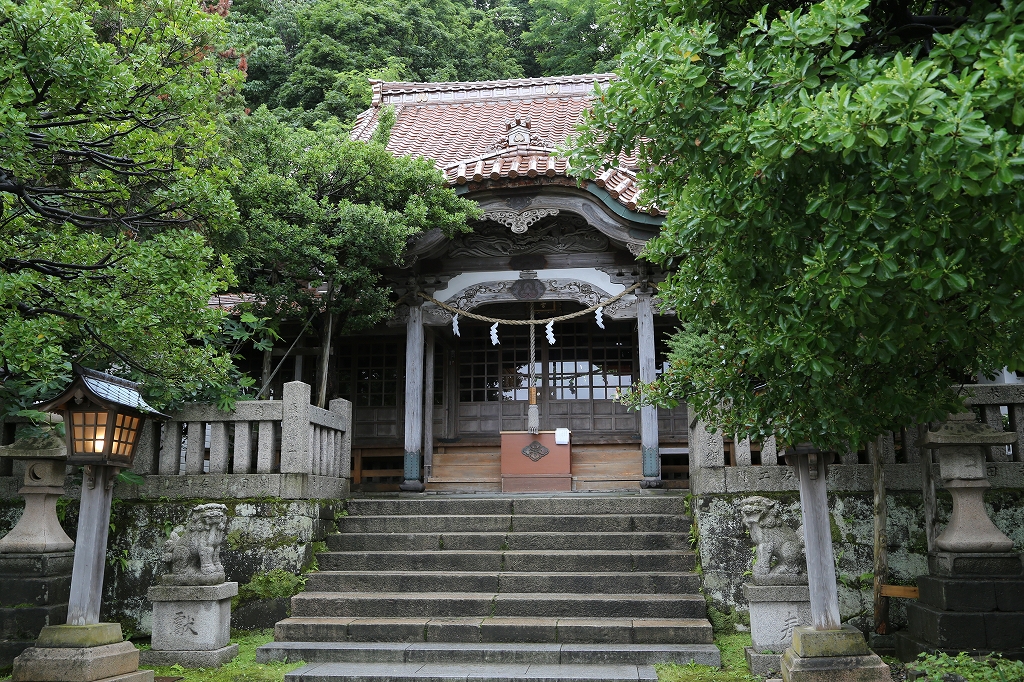
The outer shrine of Ubagami Daijingu, built in 1774
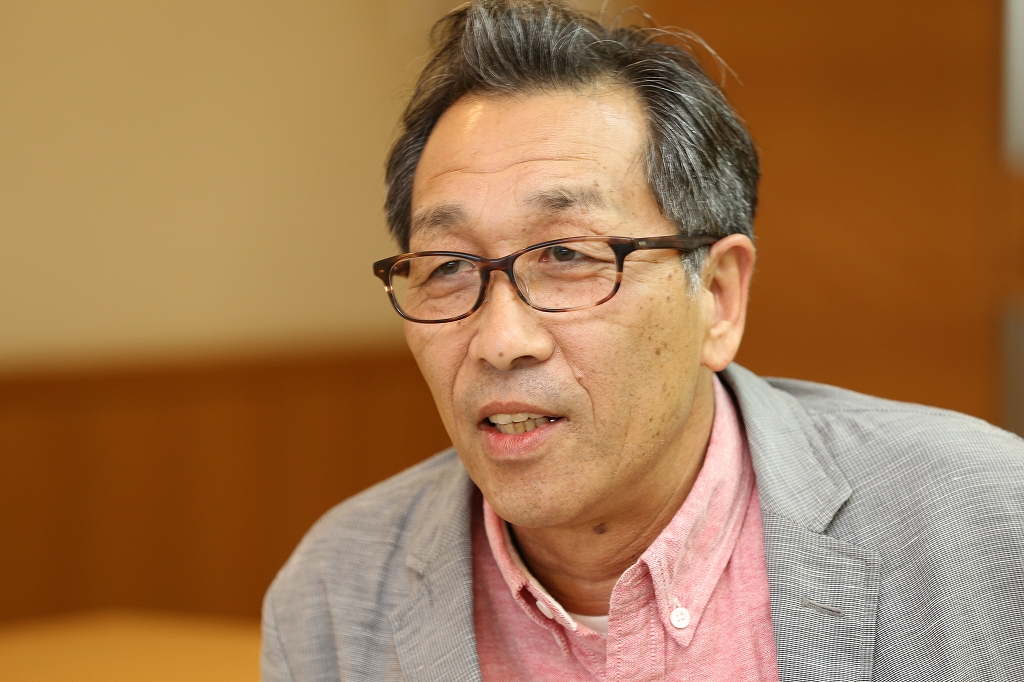
Saikaiya Nozomu
Saikaiya’s father was the doll maker who, under the name of Hokuryu, created five of the mannequins that ride on the thirteen floats mannequins. Nozomu is the second-generation Hokuryu. “Mannequins made by myself and my father adorn the festival,” says Saikaiya. “Such emotions cannot be experienced anywhere else.”
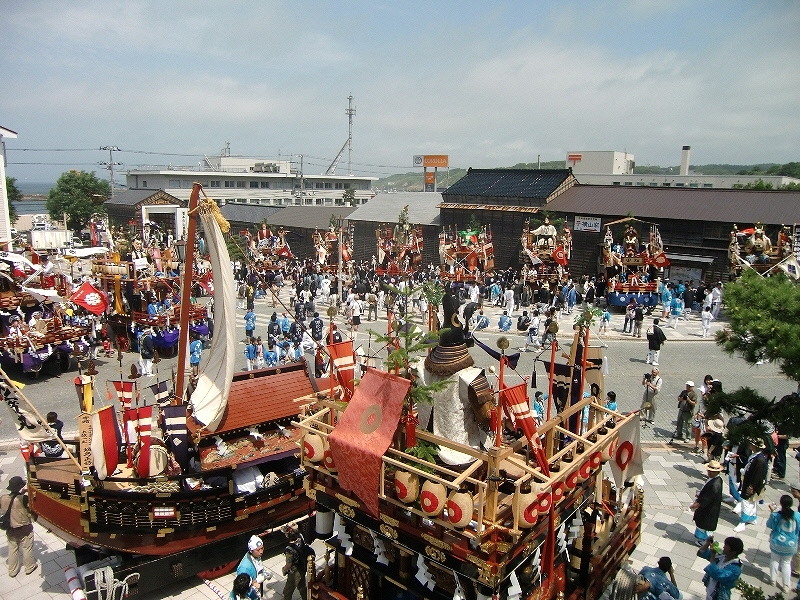
An array of floats in front of Ubagami Daijingu shrine (Photo courtesy of Esashi Sightseeing & Convention Association)
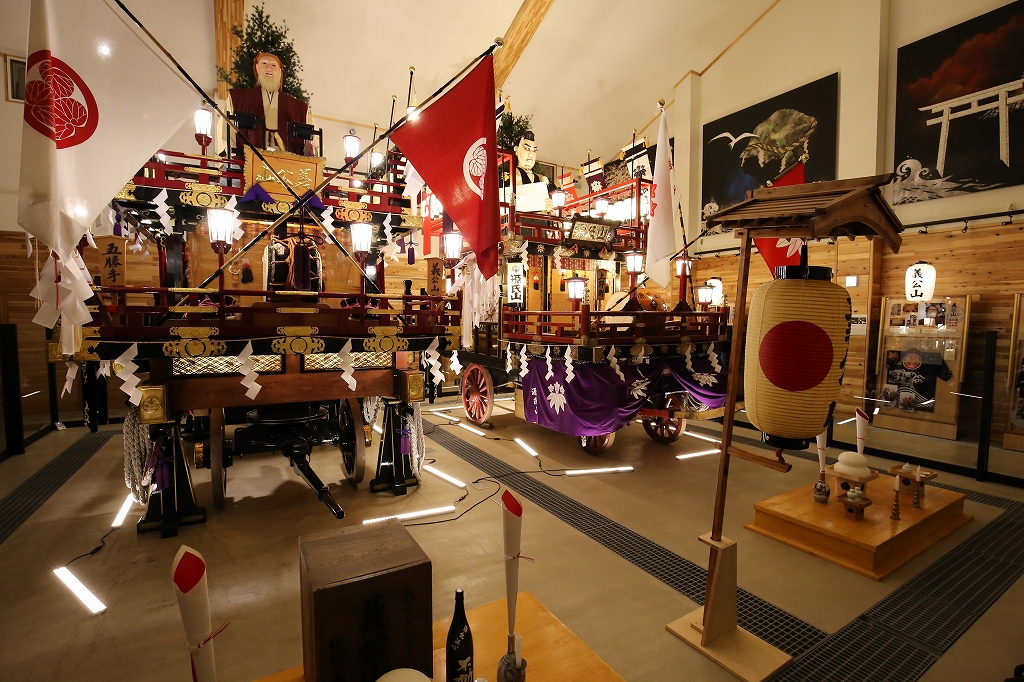
Floats exhibited in the Esashi Float Hall
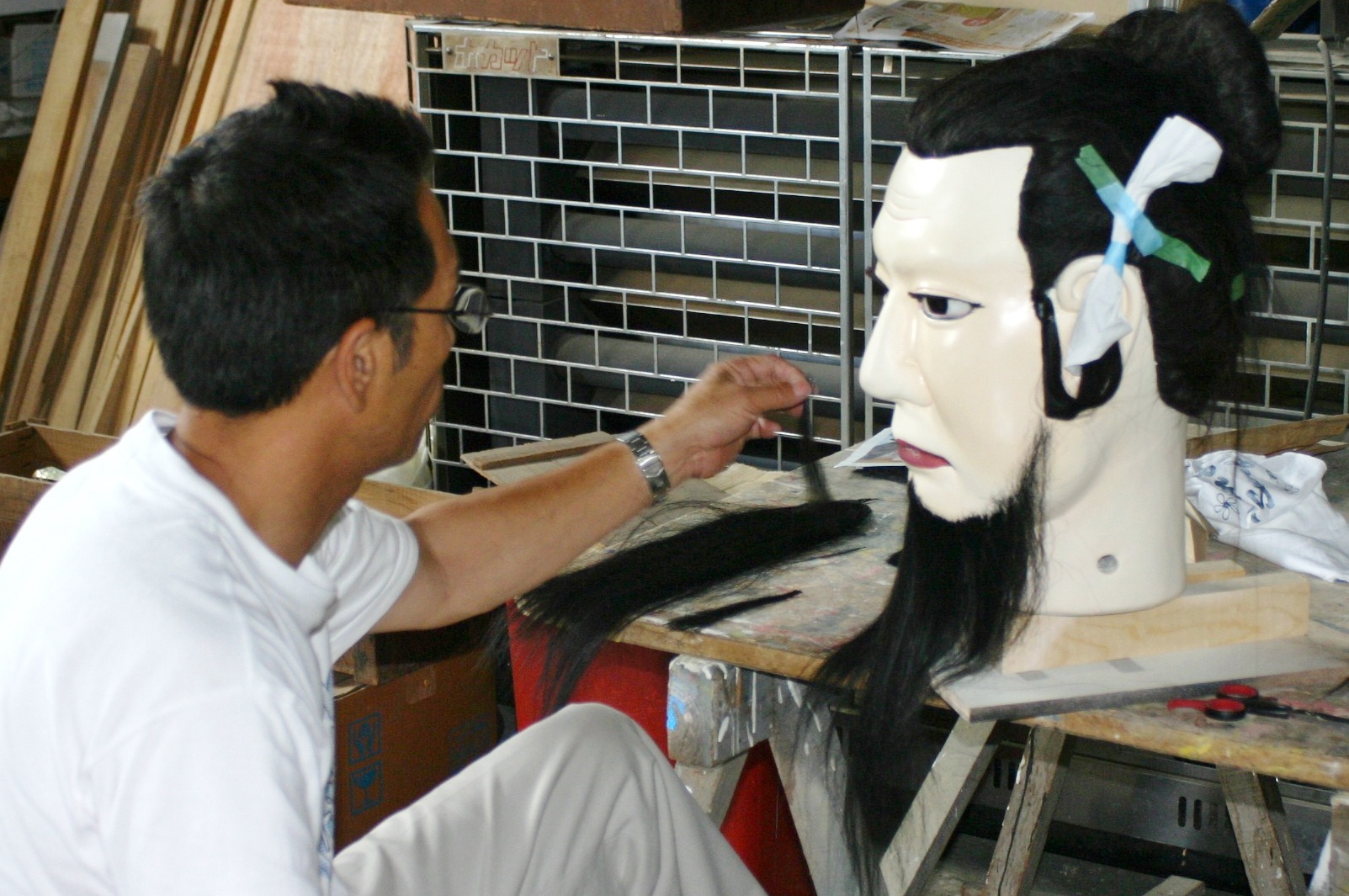
Saikaiya repairing a mannequin (Photo courtesy of Natsuhara Shigeki)
The children of Esashi are raised on drum & flute lullabies. They are pulling floats as soon as they can walk, and are playing the flute and drums when they become elementary and junior high school pupils. They then take on the role of protecting the float from overhead cables, and when they become adults they are responsible for supervising the parade of floats, with the ultimate aim of becoming one of the people charged with overall responsibility for the float.
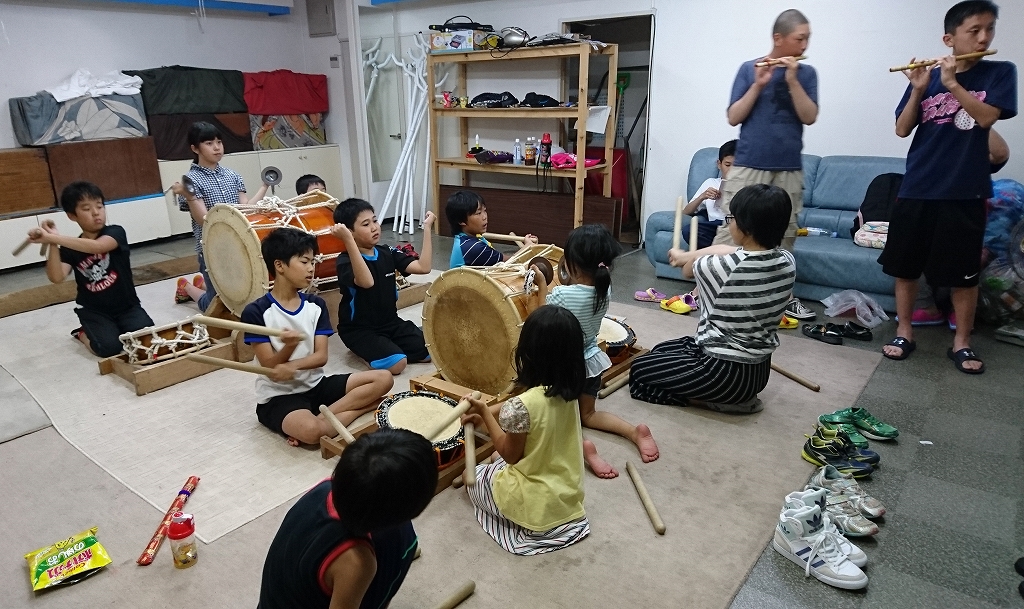
When the summer holidays begin, so do the children’s flute and drum practice sessions (Photo courtesy of Esashi Town)
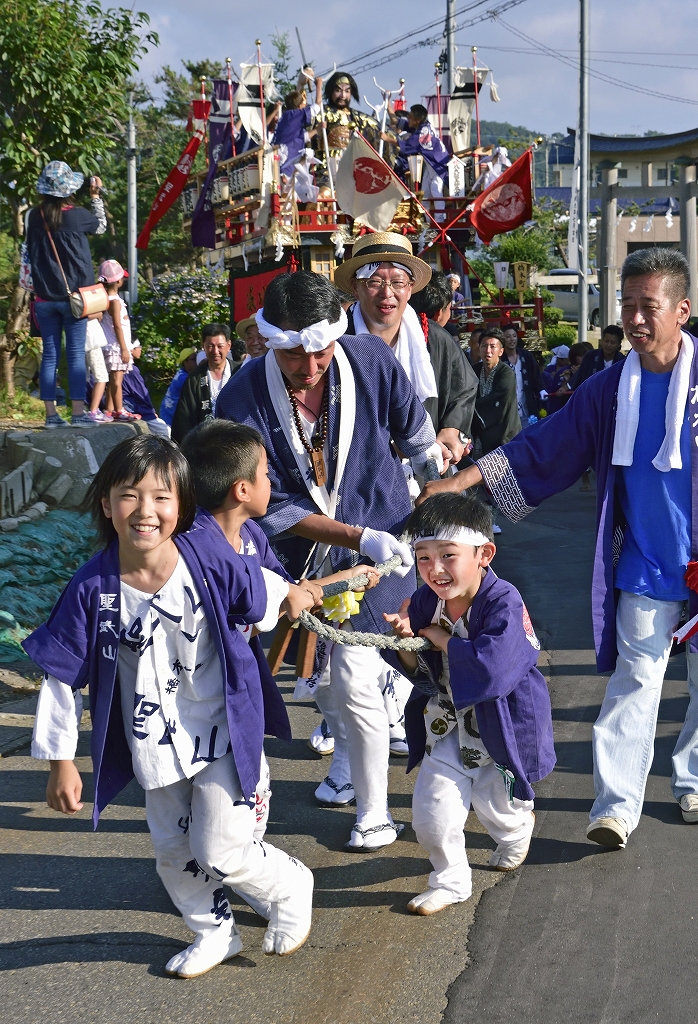
Children pulling the floats (Photo courtesy of Esashi Sightseeing & Convention Association)
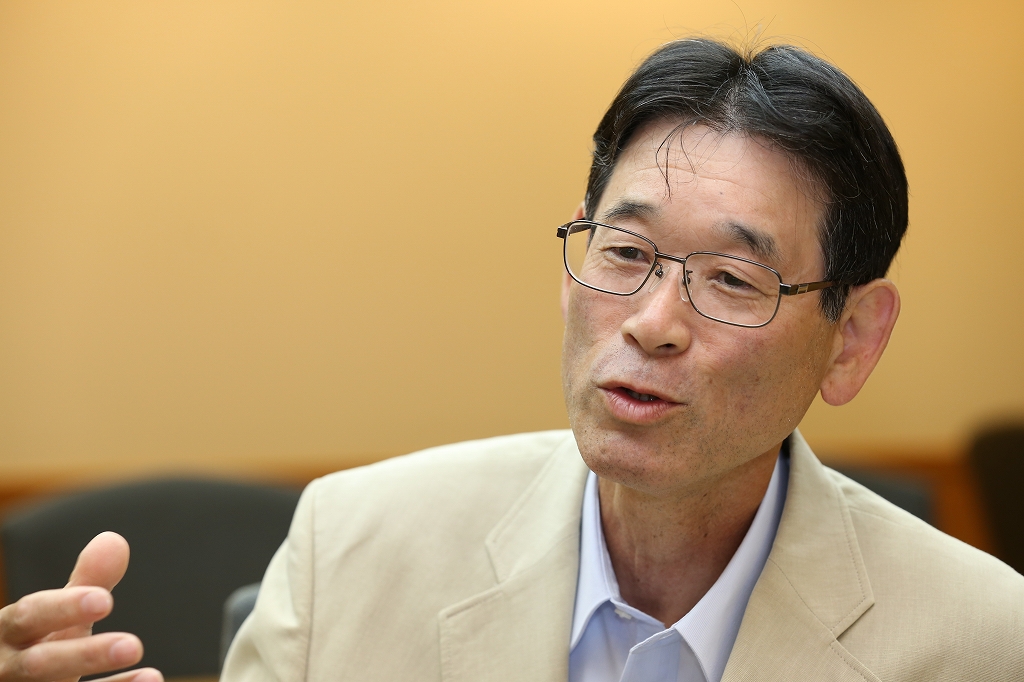
Natsuhara Shigeki
Natsuhara Shigeki, who works at an elementary school and is also the vice chair of the festival organizing committee tells of an episode that expresses Esashi residents’ feelings toward the festival. “At a job interview in a certain city, a high school student from Esashi asked if he could take a holiday on the same three festival days every year. He explained about the Ubagami Daijingu Togyo Festival and that without the younger generation, the floats would not be mobile and asked the boss for the time off. The boss of the company was surprised and impressed by the high school student’s enthusiasm for his hometown, something that is not so common, and decided to employ him straight away.”
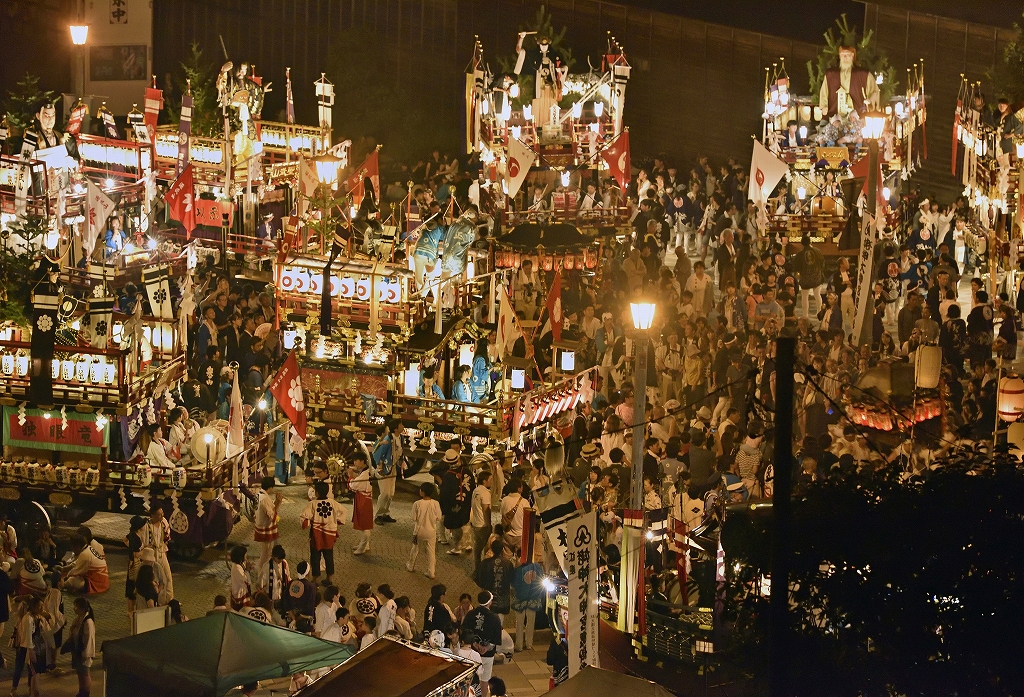
(Photo courtesy of Esashi Sightseeing & Convention Association)
Everyone gets involved in the festival – from young children to senior citizens. All homes prepare alcohol and food to welcome visitors. According to Natsuhara, “Esashi has created a culture in which all people are involved.” Saikaiya also adds “Each household serves local cuisine made with recipes handed down from the past, making it a festival in which food culture is also conveyed.”
Ofuru Shohei works as an official that supports the chief priest of the Ubagami Daijingu shrine. He married a woman who was born in Esashi and moved to the town in 1981. When he first arrived in Esashi, he prioritized his job in architectural design over the festival. “While being involved in the festival, I was also doing my job and got lots of complaints,” he laughs. When his children began to take part in the festival, he gradually became more involved with the neighborhood association, and ended up becoming the president of the organization.
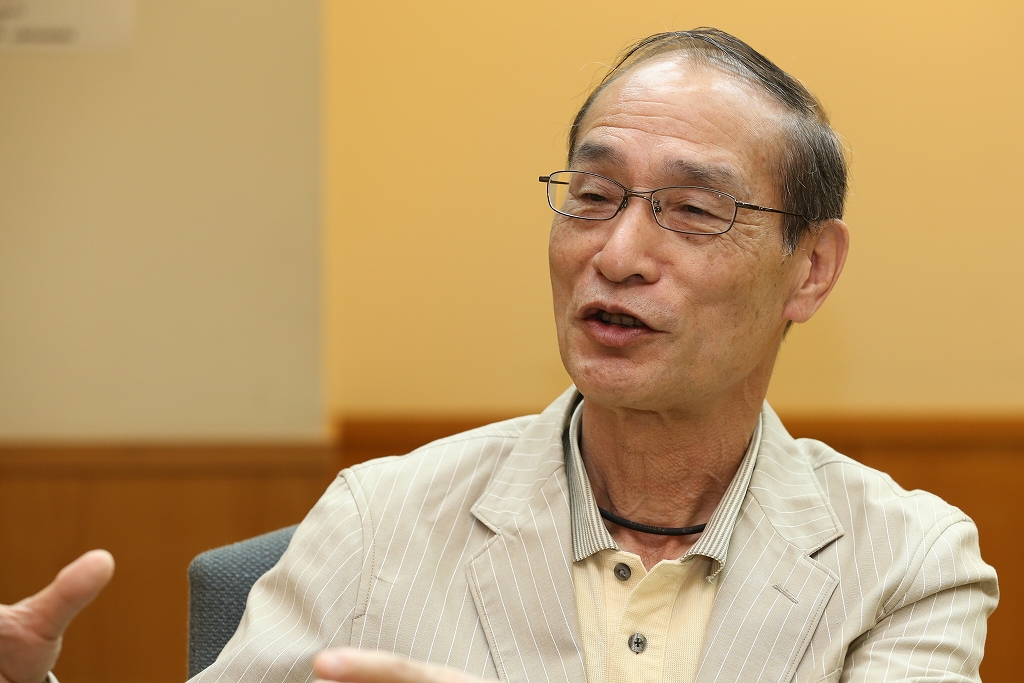
Ofuru Shohei
As the population continues to age and decline, collaboration with cities is necessary in order to convey information about the festival. “University students are coming from Sapporo to carry the portable shrines.” Every year, ten or twenty students come and help make the festival a success. According to a university professor, “When students go to Esashi, where a community that spans different generations is being created, they change. When they join companies, that experience is useful.” Students who want to work in regional development have also found employment at Esashi Town Hall.
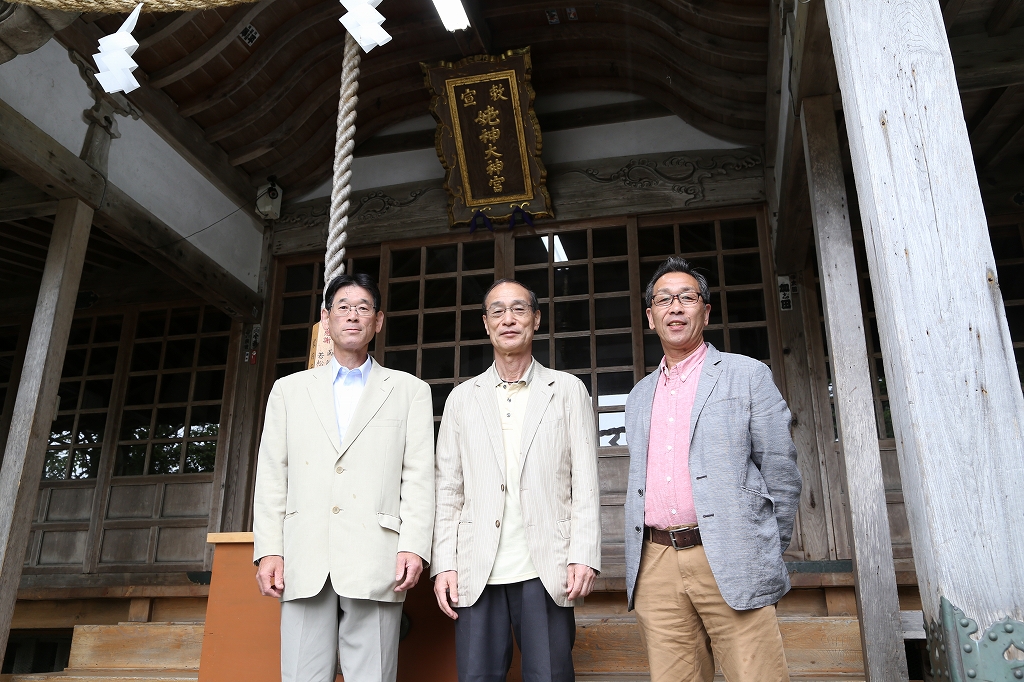
At Ubagami Daijingu shrine
Ubagami Daijingu Togyo Festival
Website
Ubagami Daijingu Shrine
Website
The Esashi Float Hall
Website